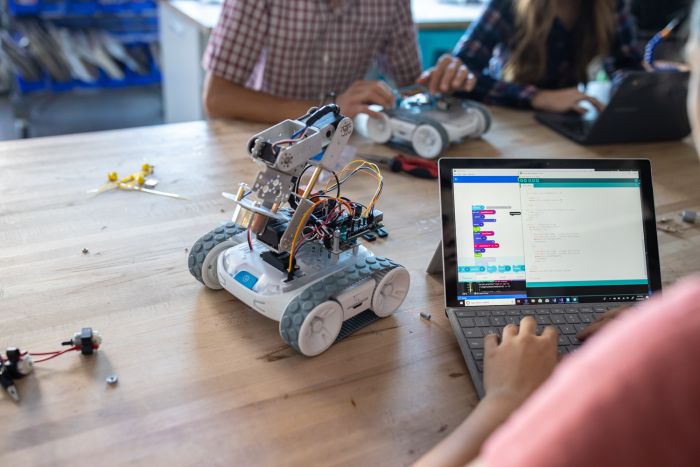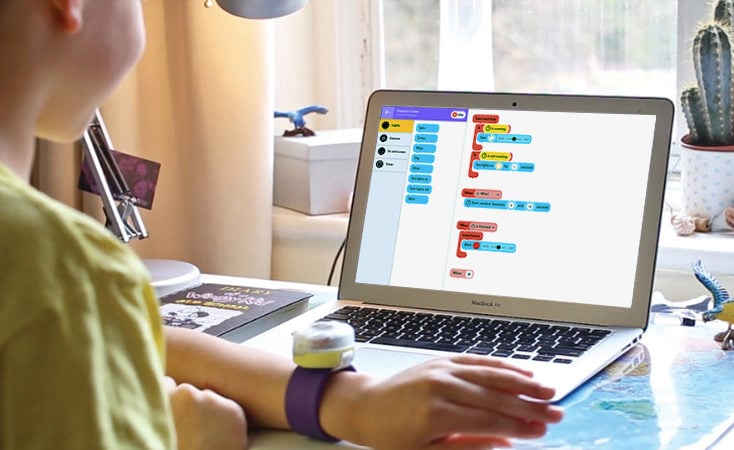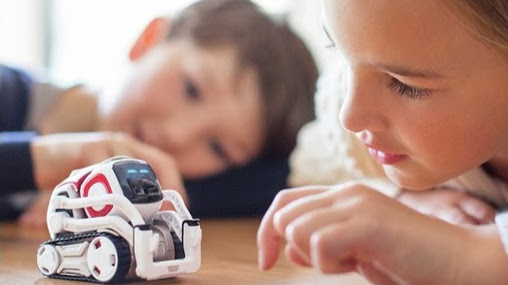Why Learning to Code Benefits Kids, Regardless of Future Career Choice

“An understanding of computer science is becoming increasingly essential in today’s world. Our national competitiveness depends upon our ability to educate our children—and that includes our girls—in this critical field.”—Sheryl Sandberg
Sheryl Sandberg, the chief operating officer of Facebook, is one of many advocates of computer science education in our country. Educators, technology experts, business leaders, and even celebrities support a new movement with a clear purpose: to teach children to read and write code.
“Coding is the new literacy. To thrive in tomorrow’s society, young people must learn to design, create and express themselves with digital technologies,” says Mitchel Resnick, a media arts and sciences professor at the MIT Media Lab.
Coding is so important because its impact extends far beyond simply creating software and websites.
- 0 Comments
- Apr 1, 2020 10:00:00 AM
- Posted by Natalia Galvis
- Topics: EdTech, STEM, Computer Science, Coding, Robots,, Learning, STEMchat, Edchat, teaching, coronavirus, homeschool
Balancing Edtech Implementation in Classrooms
Edtech has encouraged teachers to trade the traditional white board for presentation slides and their usual instruction process for on-demand online courses. The explosion of state-of-the-art tools provides more opportunities for student development and helps educators become extra effective in the classroom.

By Carol Grace for RobotLAB.com
- 0 Comments
- Mar 31, 2020 10:00:00 AM
- Posted by Natalia Galvis
- Topics: EdTech, STEM, Coding, Robots,, Learning, STEMchat, Edchat, teaching, coronavirus, homeschool
Hospital uses VR to show how the coronavirus impacts the lungs
Doctors at George Washington University Hospital are using virtual reality to uncover the damage caused by COVID-19.

- 0 Comments
- Mar 30, 2020 10:00:00 AM
- Posted by Natalia Galvis
- Topics: EdTech, STEM, Coding, Learning, VR, STEMchat, Edchat, Computational thinking, teaching, coronavirus, homeschool
Math teacher uses COVID-19 to keep students learning during pandemic
Students all over the state are out of school right now as officials try to fight the spread of COVID-19 but one school in Oklahoma City is using the coronavirus to keep kids learning.

- 0 Comments
- Mar 27, 2020 10:00:00 AM
- Posted by Natalia Galvis
- Topics: EdTech, STEM, Coding, Learning, STEMchat, Edchat, Computational thinking, teaching, coronavirus, homeschool
How to Learn Computer Science? (from Zero to Hero)
I first learned about coding and computer science (CS) in college about 20 years ago. Looking back, not much has changed in the foundational concepts or core practices in CS. What has changed is who can teach it and where it can live in the curriculum—today educators in any subject can teach coding.

- 0 Comments
- Mar 26, 2020 10:00:00 AM
- Posted by Natalia Galvis
- Topics: EdTech, STEM, Coding, Learning, STEMchat, Edchat, Computational thinking, teaching, coronavirus, homeschool
Tips For Homeschooling During Coronavirus
With school closures happening all across the country due to the coronavirus outbreak, public schools are varying widely in what they offer. School districts have a legal obligation to provide equitable learning opportunities and it can be hard for schools to guarantee access to necessary hardware, like laptops and WiFi, for all students, so some are confining themselves to handing out optional "enrichment" lessons.

If you're one of the tens of millions of parents who are now essentially homeschooling your kids, we have some tips to help you keep your kids engaged and everyone sane:
- 0 Comments
- Mar 25, 2020 10:00:00 AM
- Posted by Natalia Galvis
- Topics: EdTech, STEM, Learning, STEMchat, Edchat, teaching, coronavirus, homeschool
Embracing Online Teaching During the COVID-19 Pandemic
Learn how four instructors are keeping students on track using remote learning environments

- 1 Comments
- Mar 24, 2020 10:10:00 AM
- Posted by Natalia Galvis
- Topics: EdTech, STEM, STEMchat, Edchat, teaching, coronavirus, homeschool
10 Things to Help Students During the COVID-19 Outbreak
As more and more schools close to slow the spread of COVID-19, parents and educators are banding together to help students keep learning

- 0 Comments
- Mar 23, 2020 10:00:00 AM
- Posted by Natalia Galvis
- Topics: EdTech, STEM, STEMchat, Edchat, coronavirus, homeschool
Learning Robotics at Home

It is pretty amazing to think about how far we’ve come with technology over the past three generations. Things our grandparents couldn’t even begin to imagine are now the things our children take for granted. With as far as we’ve come already, it can be hard to believe that we are just beginning to scratch the surface of what is possible going into the future.
Opportunities for our children to make a difference in the quality of our lives using new technology are boundless. In particular, the field of robotics and robotics engineering is exploding and will likely be a major draw for young talent in the coming years. Giving your child the opportunity to “nerd-out” in robotics is fun for them now, but it has a very real potential to lead them straight into a dream career as well. And what a better opportunity to reinforce those skills during this Coronavirus (COVID-19) quarantine!
Robotics is a ton of fun no matter what your background is in. If you are preparing your kiddo for their first robotics competition, here are some things to keep in mind.
- 0 Comments
- Mar 19, 2020 10:00:00 AM
- Posted by Natalia Galvis
- Topics: Robotics, STEM, teachers, Innovation, STEMchat, Edchat, AI, coronavirus, homeschool
11 Engaging STEM Activities for Kids To do At Home
We at RobotLAB understand the importance of doing something with your kids and keep them entertained during this Coronavirus (COVID-19) quarantine. That's why we want to share with you eleven STEM activities to do at home!

- 0 Comments
- Mar 18, 2020 11:00:00 AM
- Posted by Natalia Galvis
- Topics: Robotics, STEM, teachers, Innovation, STEMchat, Edchat, AI, coronavirus, homeschool
Relevant Posts
Popular Posts
Subscribe to Email Updates
-
I Want To Learn MoreADDITIONAL INFORMATION


